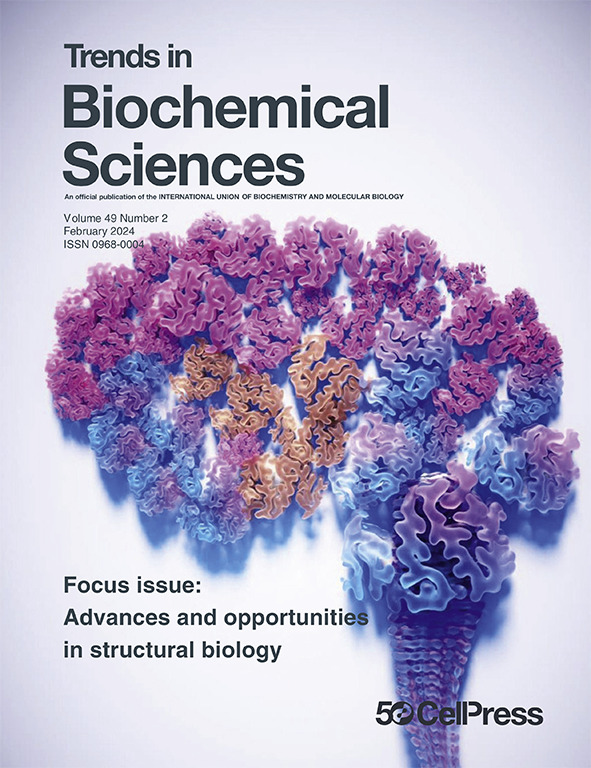PARPs和adp核糖基化介导的生物分子凝聚物:决定因素、动力学和疾病意义。
IF 11.6
1区 生物学
Q1 BIOCHEMISTRY & MOLECULAR BIOLOGY
引用次数: 0
摘要
生物分子凝聚物是一种细胞隔室,尽管缺乏包膜,但它选择性地富集蛋白质和其他大分子。这些区室通常是通过多价核酸触发的相分离形成的。新的数据显示,聚adp核糖(PAR)是一种由adp核糖基转移酶(通常称为parp)催化的核酸基蛋白质修饰,在这一过程中起着至关重要的作用。本文综述了PARPs和adp核糖基化的作用,并探讨了PARPs调节凝结物形成、溶解和动力学的原理和机制。未来的研究将使用先进的工具来检查PAR结合位点、底物相互作用、PAR长度和结构以及从凝聚物到聚集体的转变,这将是揭示健康和疾病(包括癌症、病毒感染和神经变性)中adp核糖基化复杂性的关键。本文章由计算机程序翻译,如有差异,请以英文原文为准。
PARPs and ADP-ribosylation-mediated biomolecular condensates: determinants, dynamics, and disease implications
Biomolecular condensates are cellular compartments that selectively enrich proteins and other macromolecules despite lacking enveloping membranes. These compartments often form through phase separation triggered by multivalent nucleic acids. Emerging data have revealed that poly(ADP-ribose) (PAR), a nucleic acid-based protein modification catalyzed by ADP-ribosyltransferases (commonly known as PARPs), plays a crucial role in this process. This review focuses on the role of PARPs and ADP-ribosylation, and explores the principles and mechanisms by which PAR regulates condensate formation, dissolution, and dynamics. Future studies with advanced tools to examine PAR binding sites, substrate interactions, PAR length and structure, and transitions from condensates to aggregates will be key to unraveling the complexity of ADP-ribosylation in health and disease, including cancer, viral infection, and neurodegeneration.
求助全文
通过发布文献求助,成功后即可免费获取论文全文。
去求助
来源期刊

Trends in Biochemical Sciences
生物-生化与分子生物学
CiteScore
22.90
自引率
0.70%
发文量
148
审稿时长
6-12 weeks
期刊介绍:
For over 40 years, Trends in Biochemical Sciences (TIBS) has been a leading publication keeping readers informed about recent advances in all areas of biochemistry and molecular biology. Through monthly, peer-reviewed issues, TIBS covers a wide range of topics, from traditional subjects like protein structure and function to emerging areas in signaling and metabolism. Articles are curated by the Editor and authored by top researchers in their fields, with a focus on moving beyond simple literature summaries to providing novel insights and perspectives. Each issue primarily features concise and timely Reviews and Opinions, supplemented by shorter articles including Spotlights, Forums, and Technology of the Month, as well as impactful pieces like Science & Society and Scientific Life articles.
 求助内容:
求助内容: 应助结果提醒方式:
应助结果提醒方式:


